
Deutsch-Chinesische Enzyklopädie, 德汉百科
 Israel
Israel


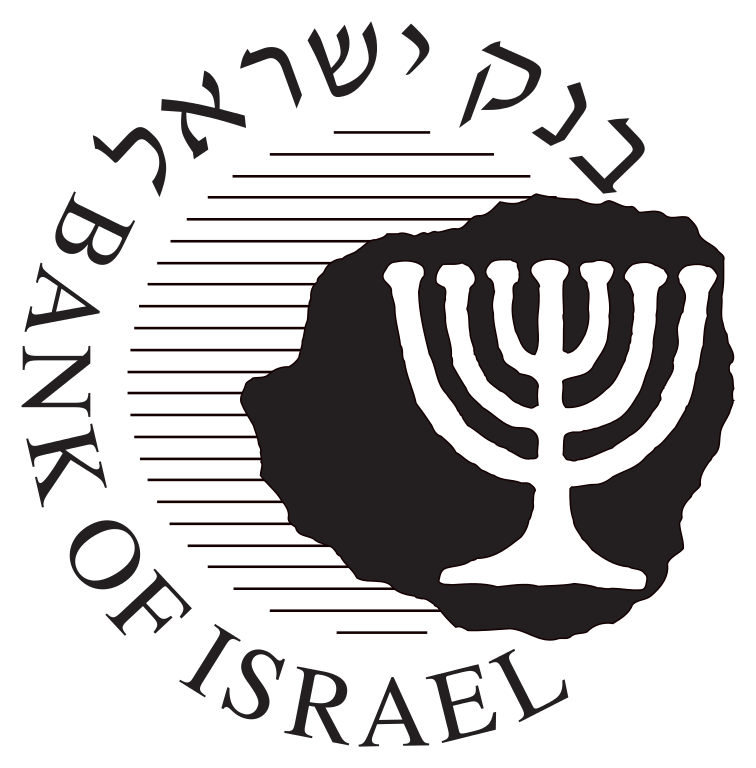


 Australia
Australia
 Bangladesh
Bangladesh
 Brunei Darussalam
Brunei Darussalam
 China
China
 Hainan Sheng-HI
Hainan Sheng-HI
 India
India
 Indonesia
Indonesia
 Iran
Iran
 Israel
Israel
 Japan
Japan
 Cambodia
Cambodia
 Kasachstan
Kasachstan
 Kyrgyzstan
Kyrgyzstan
 Laos
Laos
 Malaysia
Malaysia
 Malediven
Malediven

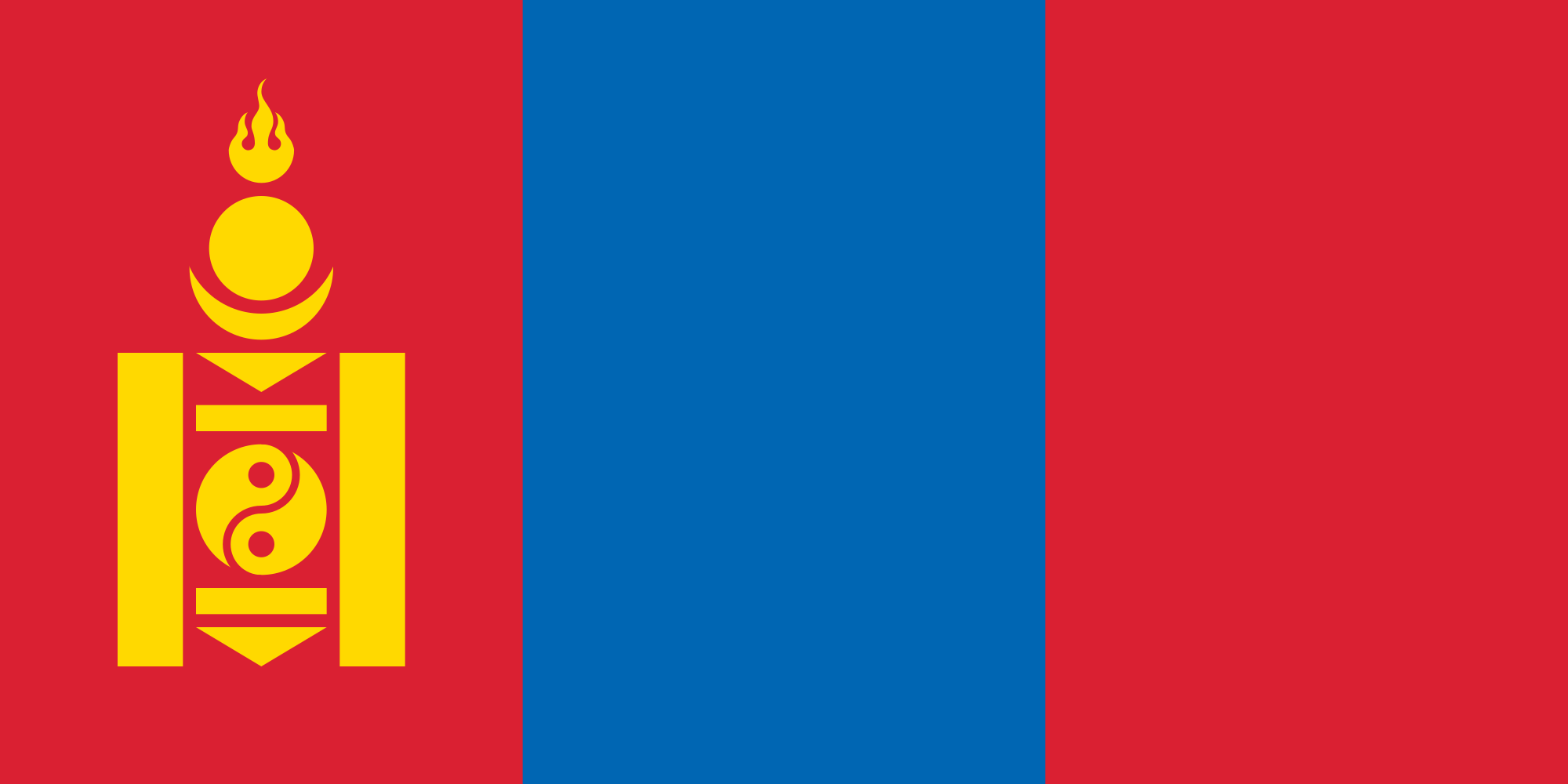 Mongolei
Mongolei
 Myanmar
Myanmar
 Nepal
Nepal
 New Zealand
New Zealand
 Pakistan
Pakistan
 Philippines
Philippines
 Republic of Korea
Republic of Korea
 Singapore
Singapore
 Sri Lanka
Sri Lanka
 Tajikistan
Tajikistan
 Thailand
Thailand
 Turkmenistan
Turkmenistan
 Uzbekistan
Uzbekistan
 Vietnam
Vietnam

ボアオ・アジア・フォーラム(博鰲アジアフォーラム、Boao Forum for Asia、略称BFA、中国語:博鳌亚洲论坛、ピンイン:Bóáo Yàzhōu Lùntán)は、中華人民共和国に本拠を置く国際非営利組織。
スイスのダボスで開催されている世界の政治家・財界人・知識人が集まる国際会議(ダボス会議)を主催する世界経済フォーラムにならい、そのアジア版を目指して、中国政府の全面的支援を受けて構想された。2001年2月27日の設立にはアジアの25カ国とオーストラリアの計26カ国が参加している。
ボアオ・アジア・フォーラム主催の最初の国際会議は2002年4月12日・4月13日に開催され、日本からは小泉純一郎内閣総理大臣が出席して演説を行った[1]。国際会議の会場は、2001年の発足会議以来、中国・海南省の海浜リゾート地・ボアオ(博鰲、海南島東海岸の瓊海市)に固定されている。会議は毎年行われ、各国首脳や大企業経営者、学者、NGO代表など政府・民間のハイレベルの人材が集い、アジアや世界の経済動向、金融政策、経済統合、経済投資、国際協力、社会問題、環境問題などに関する討議が行われる。また多くの経済人や政治家、社会運動家らが直接話し合い、国家間協力や企業提携などのトップ会談が持たれる。 過去の議題には中国の世界貿易機関(WTO)への加入問題、90年代後半のアジア金融危機問題などが取り上げられ、2004年には中国の地政学的な「和平崛起」(平和的台頭)戦略の可否が議題となった。
The Boao Forum for Asia (BFA; Chinese: 博鳌亚洲论坛; pinyin: Bó'áo Yàzhōu Lùntán) is a non-profit organisation that hosts high-level forums for leaders from government, business and academia in Asia and other continents to share their vision on the most pressing issues in this dynamic region and the world at large. BFA is modelled on the World Economic Forum held annually in Davos, Switzerland. Its fixed address is in Bo'ao, Hainan province, China, although the Secretariat is based in Beijing. The forum, sometimes known as the “Asian Davos”, takes its name from the town of Boao, located in China’s southern Hainan province, which has been the permanent venue for its annual conference since 2002.[1]
The Forum is committed to promoting regional economic integration and bringing Asian countries even closer to their development goals. Initiated in 1998 by Fidel V. Ramos, former President of the Philippines, Bob Hawke, former Prime Minister of Australia, and Morihiro Hosokawa, former Prime Minister of Japan, the Boao Forum for Asia was formally inaugurated in February 2001. The founding of the BFA was driven by the People's Republic of China and founded by 26 Asian and Australasian states on 27 February 2001. The organisation held its first meeting from 12–13 April 2002.
Discussions at the BFA focus on economics, integration, cooperation, society and the environment. In the past the forum also addressed China's entry into the World Trade Organization, as well as Southeast Asia's economic crisis during the 1990s. The geopolitical strategy 'China's peaceful rise' was a topic of discussion for the forum in 2004. In addition to its annual meeting, the BFA also sponsors other forums and meetings related to Asian issues.
El Foro de Boao para Asia (en chino: 博鳌亚洲论坛, pinyin: Bó'áo Yàzhōu Lùntán), conocida también por sus siglas en inglés BFA, es una organización no lucrativa que organiza foros de alto nivel para líderes del gobierno, los negocios y la academia en Asia y otros continentes para compartir su visión sobre los asuntos más apremiantes en esta región y en el mundo entero. El Foro Boao es el modelo del Foro Económico Mundial que se celebra anualmente en Davos, Suiza. Tiene su sede en Bo'ao, Hainan, China, aunque la Secretaría se encuentra en Pekín.
El Foro tiene como objetivos promover la integración económica regional y acercar a los países asiáticos hacia sus metas de desarrollo.1 Fue creado en 1998 por Fidel V. Ramos, expresidente de Filipinas, Bob Hawke, ex primer ministro de Autralia y Morihiro Hosokawa, ex primer ministro de Japón.2 El Foro de Boao para Asia fue formalmente inaugurado en febrero de 2001. La creación del foro fue liderado por la República Popular de China y fundada por 26 países de Asia y Australasia el 27 de febrero de 2001. La organización tuvo su primera reunión el 12 y 13 de abril de 2002.
Las discusiones del Foro Boao se centran en economía, cooperación, sociedad y medio ambiente. En e pasado el foro también abordaba el ingreso de China en la Organización Mundial del Comercio, así como la crisis financiera asiática de los años noventa. Además de su reunión anual, el foro también patrocina otros foros y reuniones relacionados con temas asiáticos.
Боаоский Азиатский Форум, БАФ (кит: 博鳌亚洲论坛; пиньинь: Bó'áo Yàzhōu Lùntán, англ: Boao Forum for Asia, аббр: BFA), также известен как «Восточный Давос» — неправительственная и некоммерческая международная организация, имеющая своей целью поддержку и развитие экономического обмена, взаимодействия и сотрудничества как в Азии, так и за её пределами путём проведения ежегодных встреч высокого уровня с участием представителей правительственных, деловых, промышленных и научных кругов и обсуждения актуальных экономических, социальных, экологических и др. проблем.
Учреждён в 2001 году. Ежегодные конференции в Боао проводятся с 2002 года.
Главный офис организации находится в г. Боао, пров. Хайнань, КНР.
В 2018 году Боаоский азиатский форум /БАФ/ пройдет 8-11 апреля. Главными темами мероприятия станут реформы, открытость, инновации и "Пояс и путь"[1].
 Belgium
Belgium
 Breakthrough Prize
Breakthrough Prize
 Fundamental Physics Breakthrough Prize
Fundamental Physics Breakthrough Prize
 Bulgaria
Bulgaria
 Denmark
Denmark
 Germany
Germany
 Finland
Finland
 France
France
 Greece
Greece
 Israel
Israel
 Italy
Italy
 Netherlands
Netherlands
 Norwegen
Norwegen
 Austria
Austria
 Poland
Poland
 Portugal
Portugal
 Romania
Romania
 Sweden
Sweden
 Switzerland
Switzerland
 Genf
Genf
 Serbia
Serbia
 Slovakia
Slovakia
 Spain
Spain
 Czech Republic
Czech Republic
 Hungary
Hungary
 United Kingdom
United Kingdom

 Important International Organizations
Important International Organizations

 Science and technology
Science and technology
 *World famous research institutions
*World famous research institutions
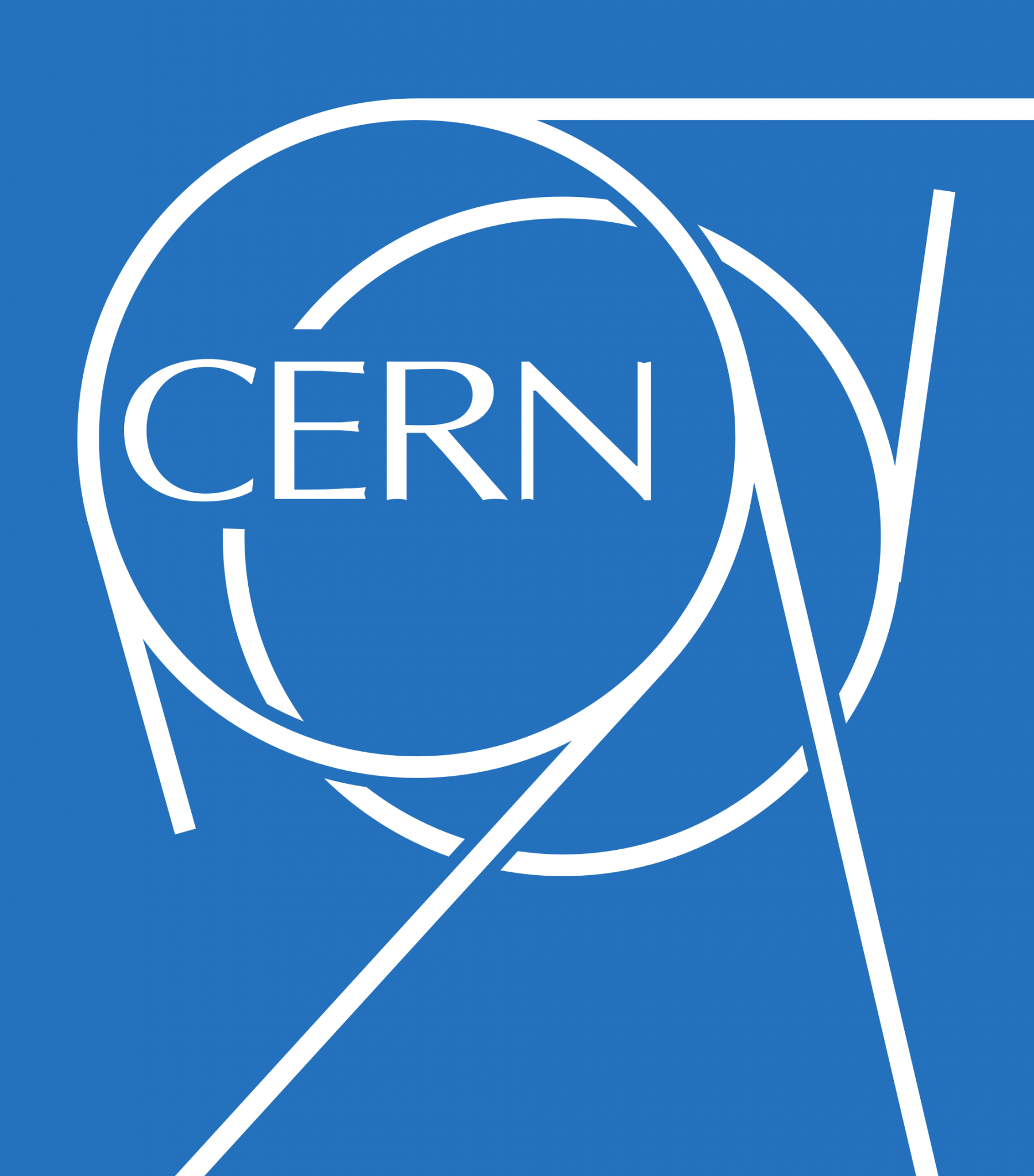
欧洲核子研究中心(法语:Organisation Européenne pour la Recherche Nucléaire;英文:European Organization for Nuclear Research,通常被简称为CERN ),是世界上最大的粒子物理学实验室,也是万维网的发祥地。它成立于1954年9月29日,总部位于瑞士日内瓦西北部郊区的法瑞边境上,享有治外法权。CERN目前有21个成员国。以色列是第一个也是目前唯一一个非欧洲成员国。
CERN也被用来称呼它的实验室,其主要功能是为高能物理学研究的需要,提供粒子加速器和其它基础设施,以进行许多国际合作的实验。同时也设立了资料处理能力很强的大型电脑中心,协助实验数据的分析,供其他地方的研究员使用,形成了一个庞大的网络中枢。
欧洲核子研究中心现在已经聘用大约三千名的全职员工。并有来自80个国籍的大约6500位科学家和工程师,代表500余所大学机构,在CERN进行试验。这大约占了世界上的粒子物理学圈子的一半。
粒子物理学博物馆欢迎一般公众在办公时间参观。除此之外,事前预约的话每天上下午共有两个时段可以参观实际的实验工作,并备有导览说明。导览员来自各国的实验合作者,可以提供多种语言的向导。
Das CERN, die Europäische Organisation für Kernforschung, ist eine Großforschungseinrichtung bei Meyrin im Kanton Genf in der Schweiz. Am CERN wird physikalische Grundlagenforschung betrieben, insbesondere wird mit Hilfe großer Teilchenbeschleuniger der Aufbau der Materie erforscht. Der derzeit bedeutendste ist der Large Hadron Collider, der 2008 in Betrieb genommen wurde.
Das Akronym CERN leitet sich vom französischen Namen des Rates ab, der mit der Gründung der Organisation beauftragt war, dem Conseil européen pour la recherche nucléaire. Die offiziellen Namen des CERN sind European Organization for Nuclear Research im Englischen beziehungsweise Organisation européenne pour la recherche nucléaire im Französischen.[1]
Derzeit hat das CERN 22 Mitgliedstaaten. Mit etwa 3.200 Mitarbeitern (Stand: 31. Dezember 2015)[2] ist das CERN das weltweit größte Forschungszentrum auf dem Gebiet der Teilchenphysik. Über 10.000 Gastwissenschaftler[2] aus 85 Nationen arbeiten an CERN-Experimenten. Das Jahresbudget des CERN belief sich 2014 auf ungefähr 1,11 Milliarden Schweizer Franken (ca. 1 Milliarde Euro).[3]
Das CERN ist außerdem der Geburtsort des World Wide Web.[4]
 Belgium
Belgium

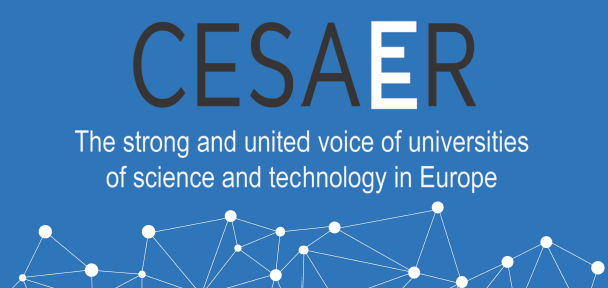 CESAER
CESAER
 Denmark
Denmark
 Germany
Germany
 Estonia
Estonia
 Finland
Finland
 France
France
 Greece
Greece
 Ireland
Ireland
 Israel
Israel
 Italy
Italy
 Lithuania
Lithuania
 Netherlands
Netherlands
 Norwegen
Norwegen
 Austria
Austria
 Poland
Poland
 Portugal
Portugal
 Romania
Romania
 Russia
Russia
 Sweden
Sweden
 Switzerland
Switzerland
 Spain
Spain
 Czech Republic
Czech Republic
 Turkey
Turkey
 Hungary
Hungary

Die Conference of European Schools for Advanced Engineering Education and Research (CESAER; deutsch Konferenz Europäischer Schulen weiterführender Ausbildung und Forschung genannt) ist eine Non-Profit-Organisation der führenden ingenieurwissenschaftlichen Universitäten in Europa. Der Verein wurde am 10. Mai 1990 in Löwen (Belgien), dem heutigen Sitz, gegründet und ist heute die größte derartige Vereinigung in Europa.
Ziel ist eine gemeinsame Sicherstellung qualitativ hochwertiger Ausbildung und Forschung im Ingenieurbereich, inkl. der Förderung von Innovationen. Außerdem setzt sich der Verein gegenüber den Institutionen der Europäischen Union für die Belange der technischen Universitäten ein.

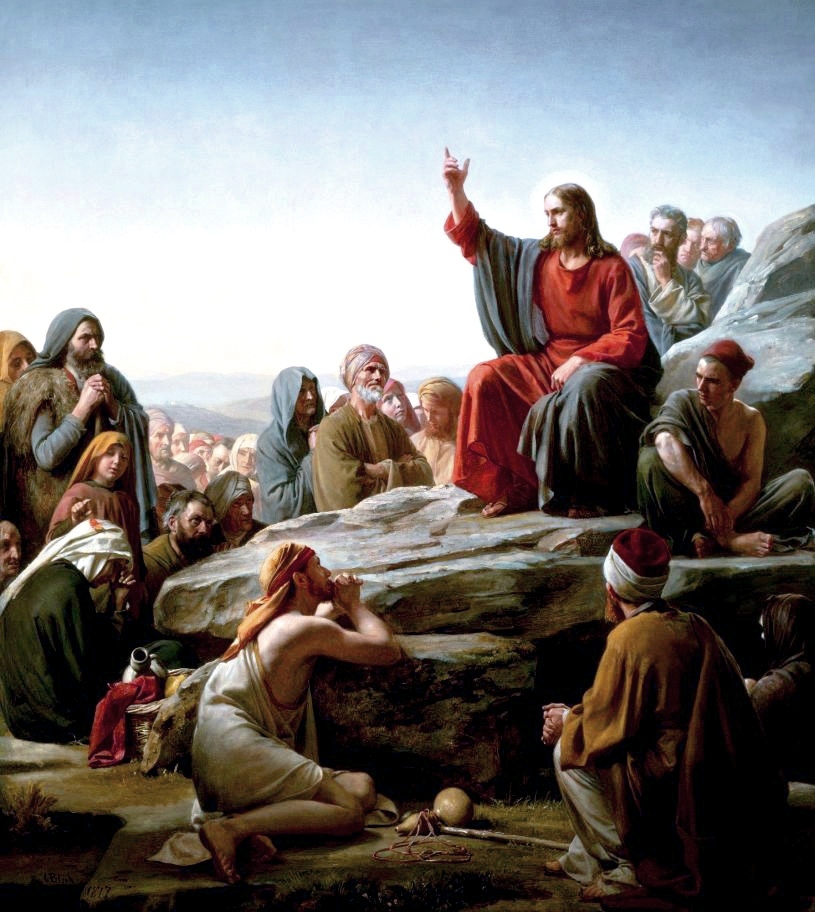
基督教相传于公元1, 2世纪时开始流传于罗马帝国统治下的各族人民之间,为耶稣所创立,初时为犹太教一个下层派别,后分裂为新的宗教。4世纪时,定为罗马帝国国教。当时的官方语为拉丁语,民间语为希腊语。中世纪基督教教会为欧洲封建社会的支柱,禁止人民思想自由,敌视科学研究。 以后基督教分为三大派别:天主教(Katholizismus)、东正教(Orthodox)和新教(Protestantismus)。
20世纪,世界基督教会联合会成立。截至21世纪初,基督徒超过二十亿人,约占全球人口三分之一,与佛教、伊斯兰教并列世界三大宗教, 并在中国五大宗教占据两席。 而天主教为首的教会,也成为世界上最大的非政府教育、医疗和慈善机构。
基督教是信仰耶稣基督为神之圣子与救世主(弥赛亚)的一神教。发源于西亚的巴勒斯坦地区,以《圣经》为最高宗教经典,信徒称为基督徒,基督徒组成的团体则称为教会或基督教会。由于部分教义源流自犹太教,因而被认为是亚伯拉罕诸教之一,现今亦与伊斯兰教、佛教共同视为世界三大宗教。其分为天主教、东正教、新教等三大宗派,但因历史发展的缘故,汉语所称的“基督教”常专指新教,基督教整体则又另以“基督宗教”、“基督信仰”或“广义基督教”称之。
基督教的共同信仰认为三位一体的独一神(汉语亦译为上帝或天主)创造了世界,并按照神自己的形像造人,由人来管理世界[1],后来人犯罪堕落,带来了死亡;圣父派遣其子耶稣道成肉身,在其在世33年的最后,为世人的罪被钉死在十字架上,在三天后从死里复活而后升天,赐下圣灵与信徒同在;他的死付上了罪的赎价,使一切信他的人得到拯救,并在神内有永生。
按照基督教在4世纪的历史纪载,第一个教会在耶稣升天与圣灵降临(约公元30至33年)后由耶稣的使徒建立,之后耶稣的使徒及信徒们不断向外宣教,并快速在当时管辖巴勒斯坦的罗马帝国境内及周边地区传播;虽曾长期遭罗马帝国政府迫害,但约于公元325年由君士坦丁大帝宣布合法化,狄奥多西大帝时更定为罗马帝国的国教,至此成为西方世界的主要宗教。之后因罗马帝国分裂后西方世界东西部的差异化发展,导致11世纪发生东西教会大分裂,形成以罗马教宗为首的公教会(天主教)、以及君士坦丁堡普世牧首为首的正教会(东正教)。16世纪时,西欧又爆发了反对教宗权威的宗教改革运动,马丁·路德(路德派)、约翰·喀尔文(喀尔文派)、乌里希·慈运理等神学家与英国国王亨利八世(安立甘派)先后脱离天主教而自立教会,日后出现了许多教义相近的教会,这些教会即为后世所统称的新教。
基督教虽起源于中东,但在7世纪创立的伊斯兰教兴起后,今日在当地的信徒人口反而居于少数。由于基督教重视传教事业(又称为“大使命”),加上西方国家自地理大发现以来对世界经济及文化发展上强势的影响力,使得基督教的传布范围遍及整个世界,基督教文化更成为世界许多文明的重要骨干。粗估统计全球超过三分之一的人口信仰基督教,至今信徒人口逾24亿,是当今世界信仰人口最多的宗教,三大宗派中又以天主教的信徒占约半数最多;基督徒最多的国家则是美国及巴西,大约占人口的75%[2][3]。
Das Christentum ist eine Weltreligion, die aus dem Judentum hervorging. Ihre Anhänger werden Christen genannt, die Gesamtheit der Christen wird auch als die Christenheit bezeichnet.
Von zentraler Bedeutung für das Christentum ist Jesus von Nazaret, ein jüdischer Wanderprediger, der etwa in den Jahren 28–30 unserer Zeitrechnung auftrat und in Jerusalem hingerichtet wurde. Seine Jünger erkannten in ihm nach seiner Kreuzigung und Auferstehung den Sohn Gottes und den vom Judentum erwarteten Messias. In ihren Bekenntnissen nennen sie ihn Jesus Christus. Der Glaube an ihn ist in den Schriften des Neuen Testaments grundgelegt. Die weitaus meisten Christen glauben an einen Gott (Monotheismus)[1] als eine Dreifaltigkeit, das heißt eine Wesenseinheit aus Vater, Sohn und Heiligem Geist.[2][3] Daneben existieren innerhalb des Christentums kleinere antitrinitarische Gruppierungen.[4][5]
Die zahlreichen Konfessionen bzw. Kirchen innerhalb des Christentums lassen sich in vier Hauptgruppen zusammenfassen: die römisch-katholische Kirche, die orthodoxen Kirchen, die protestantischen und die anglikanischen Kirchen. Mit rund 2,26 Milliarden Anhängern ist das Christentum vor dem Islam (über 1,8 Milliarden) und dem Hinduismus (rund 900 Millionen) die am weitesten verbreitete Religion weltweit.[6]
キリスト教(キリストきょう、基督教、ギリシア語: Χριστιανισμός、ラテン語: Religio Christiana、英語: Christianity)は、ナザレのイエスをキリスト(救い主)として信じる宗教[1][2]。イエス・キリストが、神の国の福音を説き、罪ある人間を救済するために自ら十字架にかけられ、復活したものと信じる[2]。その多く(カトリック教会[3]・聖公会[4]・プロテスタント[5][6][7][8]・正教会[9]・東方諸教会[10]など)は「父なる神」[注 1]と「その子キリスト」[注 2]と「聖霊」を唯一の神(三位一体・至聖三者)として信仰する。
世界における信者数は22億人を超えており、すべての宗教の中で最も多い[11]。
Christianity[note 1][2] is a Abrahamic monotheistic religion based on the life and teachings of Jesus of Nazareth as described in the New Testament. Its adherents, known as Christians, believe that Jesus Christ is the Son of God and savior of all people, whose coming as the Messiah was prophesied in the Old Testament.[3] Most Christians get baptized, celebrate the Lord's Supper, pray the Lord's Prayer and other prayers, have clergy, and attend group worship services.
Christianity began as a Second Temple Judaic sect in the 1st century in the Roman province of Judea. Jesus' apostles and their successors, the Apostolic Fathers, spread the religion across large parts of the Middle East, Europe, Ethiopia, Transcaucasia, and some other parts of Asia, despite initial persecution. The Roman emperor Constantine the Great converted to Christianity and decriminalized it in the Edict of Milan (313). He convened the First Council of Nicaea (325), where Early Christianity was consolidated into what would become the state religion of the Roman Empire (380).[4][5][6] The council formulated the Nicene Creed (325), and the Church Fathers supervised the compilation of the Christian Bible (5th century).[7] The period of the first seven ecumenical councils is sometimes referred to as the Great Church, the united full communion of the Catholic Church, Eastern Orthodox Church, and Oriental Orthodoxy before their schisms. Oriental Orthodoxy split after the Council of Chalcedon (451) over differences in Christology. The Eastern Orthodox Church and the Catholic Church separated in the East–West Schism (1054), especially over the authority of the Pope. Similarly, in 1521 Protestants were excommunicated from the Roman Catholic Church in the Protestant Reformation over Papal primacy, the nature of salvation and other ecclesiological and theological disputes.[8]
Christianity and Christian ethics have played a prominent role in the development of Western civilization,[9][10][11][12][13] particularly around Europe during Late Antiquity and the Middle Ages. Following the Age of Discovery (15th–17th century), Christianity was spread into the Americas, Oceania, sub-Saharan Africa and the rest of the world via missionary work and colonization.[14][15][16]
It is the world's most populous religious group,[17][18] with over 2.4 billion followers,[19][20][21] or 33% of the global population, comprising a majority of the population in about two-thirds of the countries in the world.[21] Today, the four largest branches of Christianity are the Catholic Church (1.3 billion), Protestantism (920 million), the Eastern Orthodox Church (260 million)[22] and Oriental Orthodoxy (86 million).
Le christianisme est une religion abrahamique, originaire du Proche-Orient, fondée sur l'enseignement, la personne et la vie de Jésus de Nazareth, tels qu'interprétés à partir du Nouveau Testament. Il s'agit d'une religion du salut considérant Jésus-Christ comme le Messie annoncé par les prophètes de l'Ancien Testament. La foi en la résurrection de Jésus est au cœur du christianisme car elle signifie le début d'un espoir d'éternité libéré du mal.
Les premières communautés chrétiennes naissent au Ier siècle en Judée et dans les grandes villes de la diaspora juive telles que Rome, Éphèse, Antioche et Alexandrie. Le christianisme se développe à partir du IIe siècle dans l'Empire romain, dont il devient la religion officielle à la fin du IVe siècle, mais aussi en Perse, en Inde et en Éthiopie. Au Moyen Âge, le christianisme devient majoritaire en Europe, tandis qu'il s'amenuise face à l'islam au Proche-Orient. Il est devenu la religion la plus importante de la planète en raison de son expansion en Amérique à partir du XVIe siècle et en Afrique depuis le XXe siècle. Il est actuellement présent dans tous les pays. En 2015, le nombre total de chrétiens dans le monde est évalué à 2,4 milliards, ce qui en fait la religion comptant le plus de fidèles, devant l'islam et l'hindouisme.
Les Églises chrétiennes sont regroupées en différentes branches, dont les principales sont le catholicisme, le christianisme orthodoxe et le protestantisme représentant respectivement 51 %, 11 % et 38 % du total des chrétiens en 2017.
Il cristianesimo è una religione a carattere universalistico, originatasi dal giudaismo nel I secolo, fondata sulla venuta e predicazione, contenuta nei Vangeli, di Gesù di Nazareth, inteso come figlio del Dio d'Israele e quindi Dio egli stesso, incarnato, morto e risorto per la salvezza dell'umanità, ovvero il Messia promesso, il Cristo.[1][2]
Insieme a ebraismo e islam, il cristianesimo è classificato da alcuni come "religione abramitica"[3][4], è una monolatria. Il Cristianesimo è la religione più diffusa, con una stima di circa 2,1 miliardi di fedeli nel mondo al 2000[5].
Il cristianesimo emerge dal giudaismo nel I secolo; alle origini si presenta con il duplice aspetto di giudeo-cristianesimo (i cui membri ritenevano che solo i circoncisi potevano essere salvati) ed etno-cristianesimo (o cristianesimo dei Gentili, che comunque devono osservare la legge di Mosè), come si desume dai racconti degli Atti di Luca e da alcune lettere di Paolo (come la Lettera ai Galati, le lettere ai Corinzi), mostrando tuttavia che le due anime convivono senza alcuna scissione, e di avere raggiunta una formula di concordia con il primo concilio di Gerusalemme (Atti 15).
I cristiani assunsero dal giudaismo le sue Sacre scritture, definite poi Antico Testamento, nella versione tradotta in greco ellenistico (anche a causa della prevalente origine greco-romana della maggioranza dei primi adepti), dottrine fondamentali come il monoteismo, la fede in un messia o cristo, alcune forme del culto (incluso il sacerdozio), concetti di luoghi e tempi sacri, l'idea che il culto debba essere modellato secondo il modello celeste, l'uso dei Salmi nelle preghiere comuni.
Il cristianesimo inteso come religione distinta da quella ebraica iniziò a delinearsi dopo il cosiddetto "Sinodo di Jamnia" in cui venne presa posizione decisa circa l'estraneità della "Via"[6] dall'ebraismo ortodosso, a partire dalla seconda metà del II secolo.
Successivamente la Chiesa post-apostolica lentamente si organizzò attorno alla cosiddetta pentarchia dei cinque patriarcati di Roma, Costantinopoli, Alessandria, Antiochia e Gerusalemme.
Inizialmente si ebbe una secolare contesa critica tra varie correnti per la formazione della prima Cristianità, correnti che si rifacevano a diverse raccolte di testi ritenuti sacri. Tale contesa terminò nel IV secolo con la conversione dell'Imperatore Costantino I (battezzato in punto di morte da un vescovo ariano[7]) il quale fece indire il Concilio di Nicea per far emergere una sola corrente ed eliminare le altre. Contestualmente la Cristianità divenne una religione approvata ufficialmente e i vescovi Cristiani, vittime in precedenza del potere militare, ne passarono al comando[8].
Nel 380 Teodosio con l'Editto di Tessalonica la rese l'unica religione ufficiale dell'impero romano ricorrendo anche a mezzi cruenti per reprimere le resistenze dei pagani.[9]
Nel 1054 contese teologiche circa i dogmi trinitari, il celibato ecclesiastico ed altre questioni minori culminarono nel Grande Scisma tra Chiesa cattolica e Chiesa ortodossa.
Circa cinque secoli dopo lo scandalo delle indulgenze spinse Lutero a causare un altro scisma e quindi a fondare il Protestantesimo.
Nell'Europa dell'est l'instaurazione di regimi marxisti, per definizione materialisti, ha avuto come conseguenza un processo di scristianizzazione pianificata di stato che è avvenuto iniziando dalla Russia (ex Unione Sovietica) e poi, nel dopoguerra, nei paesi governati da regimi comunisti satelliti dell'URSS. In seguito alla caduta dei regimi, dopo il 1989, è stata ristabilita, in buona parte dei casi, la libertà di culto.
El cristianismo (del latín christianismus, y este del griego χριστιανισμός)1 es una religión abrahámica monoteísta basada en la vida, enseñanzas y milagros de Jesús de Nazaret, tal y como se presentan en el Nuevo Testamento, que es la segunda parte de la Biblia, el libro sagrado de los cristianos. Con 2400 millones de seguidores,234 una de cada tres personas en el mundo es cristiana, por lo que es la religión más extensa del mundo.56 Los cristianos creen que Jesús es el hijo de Dios, así como el Mesías (o Cristo) profetizado en el Antiguo Testamento, que sufrió, fue crucificado, descendió al infierno y resucitó de entre los muertos para dar vida eterna a quienes crean y confíen en él para la redención de sus pecados. Las cuatro ramas más importantes del cristianismo son el catolicismo (1300 millones de adherentes), el protestantismo (920 millones), la Iglesia ortodoxa (270 millones) y las Iglesias ortodoxas orientales (86 millones). El movimiento que busca restaurar la unidad de la Iglesia cristiana recibe el nombre de ecumenismo.
El cristianismo surgió del judaísmo789 a mediados del siglo I d. C.1011 en la provincia romana de Judea. Los primeros líderes de las comunidades cristianas fueron los apóstoles y sus sucesores los padres apostólicos. Este cristianismo primitivo se extendió, pese a ser una religión minoritaria y perseguida, por Judea, Siria, Europa, Anatolia, Mesopotamia, Transcaucasia, Egipto y Etiopía. El cristianismo fue legalizado en el Imperio romano mediante el Edicto de Milán, en el año 313. El emperador Constantino se convirtió al cristianismo y convocó el Concilio de Nicea (325), en el que se formuló el credo niceno. El cristianismo se convirtió en la religión oficial del Imperio romano en el año 380, bajo el emperador Teodosio I el Grande.121314 Durante estos primeros siglos, los Padres de la Iglesia gradualmente consolidaron las doctrinas del cristianismo y supervisaron el desarrollo del canon del Nuevo Testamento.15
La Iglesia de los primeros siete concilios ecuménicos se conoce frecuentemente como la «Gran Iglesia», porque la Iglesia católica, la Iglesia ortodoxa y las Iglesias ortodoxas orientales estaban en plena comunión.16 Las Iglesias orientales se separaron tras el Concilio de Calcedonia (451) por diferencias cristológicas. La Iglesia ortodoxa se separó de la Iglesia católica en 1054 por diferencias acerca de la autoridad del papa. El protestantismo, aunque es en realidad un conjunto de denominaciones, aparece por primera vez durante la Reforma protestante del siglo XVI, y criticaban lo que percibían como importantes desviaciones teológicas y eclesiológicas por parte de la Iglesia católica.17 El descubrimiento de América en 1492 extendió el cristianismo por América. La Iglesia católica impulsó la Contrarreforma como respuesta a la Reforma protestante, a través del Concilio de Trento (1545-1563).
Algunos de los escritos sagrados cristianos son compartidos con el judaísmo. El Tanaj constituye, junto con la Biblia griega —más antigua que el Tanaj en su forma actual—, la base y la fuente para el Antiguo Testamento de las diferentes biblias cristianas. Por este motivo, el cristianismo es considerado una religión abrahámica, junto con el judaísmo y con el islam.
Algunos estudios del siglo xx no toman como fecha incontrovertible el año 33 d. C. para la muerte de Jesucristo. Hay quienes, al indagar en las fechas, sugieren que pudo haber un desfase de 4 a 8 años entre el inicio del cómputo de la era cristiana y la fecha precisa del nacimiento de Jesús de Nazaret, conocido como Cristo.18 En adición a esto, no hay clara certeza ni consenso entre estos autores de que este haya muerto a la edad de 33 años, tal como algunos textos bíblicos parecen mostrar.Nota 3 En sus primeras décadas, el cristianismo era considerado por algunos como una doctrina sectaria de las tradiciones judías ortodoxas.20 Desde que el cristianismo se convirtió en la religión oficial del Imperio romano en el siglo iv, ha influido de manera significativa en la cultura occidental y en muchas otras.
Христиа́нство (от греч. Χριστός — «Пома́занник», «Месси́я») — авраамическая мировая религия, основанная на жизни и учении Иисуса Христа, описанных в Новом Завете[1]. Христиане верят, что Иисус из Назарета есть Мессия, Сын Божий и Спаситель человечества[2]. Христиане не сомневаются в историчности Иисуса Христа.
Христианство — самая крупная мировая религия как по численности приверженцев, которых около 2,3 млрд, так и по географической распространённости — в каждой стране мира есть хотя бы одна христианская община.
Наиболее крупные течения в христианстве — католицизм, православие и протестантизм. В 1054 году произошёл раскол христианской церкви на католическую и православную). Появление протестантизма стало результатом реформационного движения в Католической церкви в XVI веке.
Христианство возникло в I веке в Палестине, находившейся на тот момент под властью Римской империи, первоначально в среде арамеоязычного населения Междуречья и уже в первые десятилетия своего существования получило распространение и в других провинциях и среди других этнических групп[3].
В качестве государственной религии христианство впервые было принято в Великой Армении в 301 году[4][5][6]. При императоре Константине I, начиная с эдикта 313 года о свободе вероисповедания (см. Миланский эдикт), христианство стало обретать статус государственной религии и в Римской империи[7].

自从Cimatron公司1982年创建以来,它的创新技术和战略方向使得Cimatron有限公司在CAD/CAM领域内处于公认领导地位。作为面向制造业的CAD/CAM集成解决放方案的领导者承诺为模具、工具和其它制造商提供全面的,性价比最优的软件解决方案,使制造循环流程化,加强制造商与外部销售商的协作以极大地缩短产品交付时间。
不管您是为制造而设计,还是为2.5~5轴铣销加工生成安全、高效和高质量的NC刀具轨迹。,Cimatron面向制造的CAD/CAM解决方案为客户提供了处理复杂零件和复杂制造循环的能力。Cimatron保证了每次制造出的产品即是您所设计的产品。
Cimatron公司推出的全新中文版本CimatronE10.0,其CAD/CAM软件解决方案包括一套易于3D设计的工具,允许用户方便的处理获得的数据模型或进行产品的概念设计。10.0版本在设计方面以及数据接口方面都有了非常明显的进步。
今天在世界范围内的四千多客户在使用Cimatron的CAD/CAM解决方案为各种行业制造产品。这些行业包括:汽车、航空航天、计算机、电子、消费类商品、医药、军事、光学仪器、通讯和玩具等行业。
CimatronE ist eine ab September 2001 vertriebene CAD/CAM-Softwarelösung für den Werkzeug- und Formenbau und die Fertigungsindustrie. Die Software wird bei kleinen und mittleren Unternehmen der Automobil- und Flugzeugindustrie für CAD-Entwicklung von Kunststoff-Spritzguss-Produkten und Werkzeugen sowie für die Steuerung der CNC-Werkzeugmaschinen eingesetzt. Angeboten wird auch eine für die Schuhherstellung angepasste Version der Software.
Die Software verfügt über Schnittstellen für neutrale Dateiformate und Dateiformate anderer Hersteller (ACIS, STEP 203/214, VDA-FS, IGES, Parasolid, CATIA V4/V5, ProE Neutral, DWG/DXF).

 Financial
Financial
 Companies
Companies
 Party and government
Party and government
 Education and Research
Education and Research

 IT-Times
IT-Times
 Religion
Religion
 Architecture
Architecture
 History
History
 Art
Art
 Literature
Literature
 Music
Music
 World Heritage
World Heritage